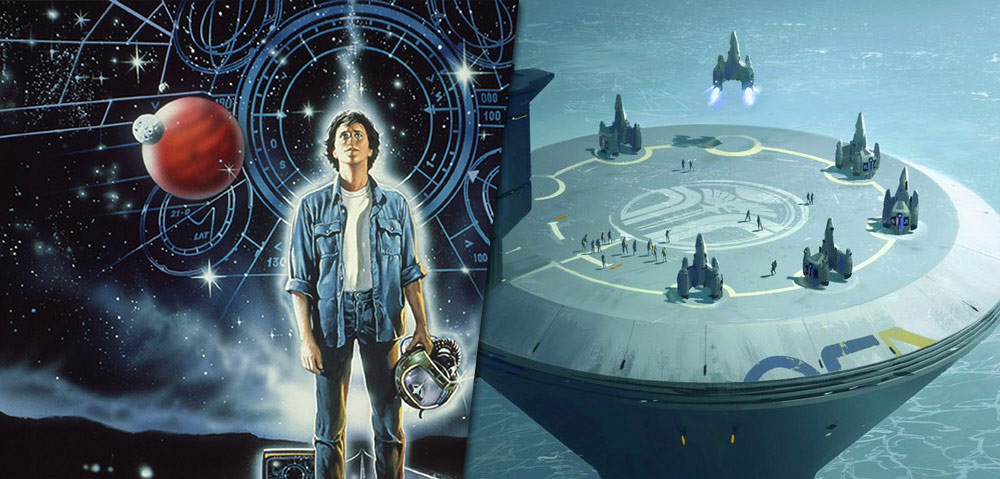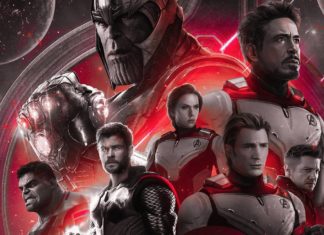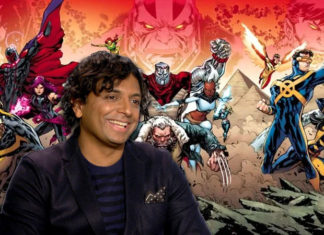The year was 1984 and no one knew what would come next. A cold death for the Russian Navy in the Rocky Mountains was in the cards. The Imperial army had been raucously defeated at Endor by Generals Solo and Calrissian the previous May ($572.2 million worldwide), Vader’s helmet was reduced to ashes during funeral rites performed by Luke Skywalker and the strains of “Yub Nub” were heard and delighted to hither and thither across the galaxy.
For the moment George Lucas was keeping to himself what the future held for his/the/our franchise, but he had not precluded the possibility of further sequels completely. Not in the pages of Fangoria. Not in the pages of Cinemafanique, not in the pages of the god-damned New York Times neither. You know what I mean.
And yet… it seemed as though that all things Star Wars had come to an end.
An untenable idea for the fans if not for the mercurial creator from Modesto.
While kids the world over played out new Star Wars scenarios using their action figures and plastic starships and models, and while Michael Jackson ruled the airwaves, so too the arcade obsession was in full swing.
Quarters were being broken out everywhere and slammed into slots.
Hand-eye coordination was suddenly being selected for on the evolutionary tree in a big ass way.
In his New Year’s Day review for The Last Starfighter Ebert struck a dad note about the fad:
The way to get rich, they say, is to invent something that’s cheap and habit-forming, and get a patent on it. I guess video games would qualify. Kids pump quarters into them by the hour, turning into video junkies as they watch gorillas climbing little electronic ladders. Are the games educational? Sure, if you want to grow up to be a professional video game player.
I think what he meant at the time was “There is no such profession.”
Little did he know.
In fact, he would never live to see the day but in 2019 professional video game player is about the most god damn lucrative thing that you could set out to do so long as you upload stream on Twitch and your videos to YouTube.
This Is The Way We Live Now
I was only one year old in 1984, so I do not remember the arcade era or the Soviet menace for that matter.
And so my memories of this halcyon era when it came to gaming are filled in by scenes from films like Jaws 3, Tron or The Last Starfighter for that matter or from later documentaries like The King of Kong.
By the time I was becoming conscious, home consoles in the form of the first Nintendo system were hitting shelves across North America and had been for a couple of years.
It’s not that arcades suddenly became less cool (maybe they did) when the first Nintendo began to dominate. It’s just that now some of the best gaming experiences didn’t require you to leave the comforts of home.
Sound familiar?
Yes, yes, I’m talking about streaming services doing in with the theatrical experience.
Something that’s currently being warred over by theater owners and said streaming entities.
That said, I do have a few memories of good times using arcade machines.
Mostly the trio of pinball machines they had on offer at a local truck stop in bum fuck Indiana where my dad took me of a morning when school was out so we could load up on cheap pancakes and sausage and have a go at the Terminator 2 machine.
But this was years later. For the most part, the romance of the arcade was something I never really got to experience.
It wasn’t until the release of Street Fighter 2 and Mortal Kombat that I saw how powerful the experience could be with players standing there betwixt screen and joystick obsessively tickling the buttons. It didn’t look all that cool.
The Street Fighter 2 machine nestled at the bottom of a ski slope in Aspen looked too complicated and the Mortal Kombat machine with a line out the door at a local bowling alley (right next to the plush toy ticket exchange) too dumb. I did not want to be sucked into either of those two games. Thank you very much.
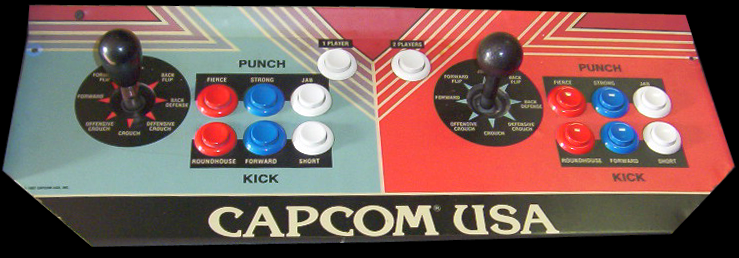
But In 1984, It Was Different
The two things every kid seemed interested in at the time — correct me if I’m wrong — were arcades and Star Wars (toys, films, novelizations, etc). The loss of the second with the extirpation of the Emperor left a vacuum at the movie house and in the soul.
There was a high stakes race to rake in profits from Star Wars withdrawal.
And so we shouldn’t be surprised that someone came along to capitalize on these two trends.
What we got only one year after Jedi was an unexpectedly slow-moving and interesting little picture called The Last Starfighter and with a novelization by no less than Alan Dean Foster.

Of course, by 1984 Tron had already been released which merged the worlds of video games with reality.
Ender’s Game — which shares an interesting commonality with The Last Starfighter — would be released only one year later in 1985. One could make the argument that there is a very similar theme between simulation and reality in Ender’s Game‘s finale to that of The Lost Starfighter. Something in the subconscious of humanity was looking to merge heroically with these new simulations.
None of this might seem unique in 2019 where gaming dominates the culture.
After all, the top YouTube stars as I already mentioned aren’t reviewing movies they’re playing games and doing live commentary on it. Nothing related to movies cracks the top ten when it comes to the kinds of personalities that people like to watch on YouTube, and I think that is salient insofar as it shows us how far behind interest in movies is as compared with the insatiable interest in gaming.
This might be the perfect time for a new Starfighter, therefore where video games play such a key role in the plot.
But back to 1984 where video games were just beginning to become the juggernaut of entertainment, they are now.
Our hero Alex Rogan conquers a popular local arcade game and is cast thereby in an intergalactic war between an evil force and a group of honor-bound and human-friendly aliens. The Last Starfighter is released to lukewarm reviews but grows to cult status over the ensuing decades.
I saw the film many many years ago and my memories of it are not particularly vivid. I only remember that I thought the film was good but modestly so and that it was so obviously a gap filler for a new Star Wars film that was prayed for but would not come to cinemas for many decades hence. And when it did everything would shrivel up and the stakes would be zero.
But now the prospect of a sequel/reboot to The Last Starfighter has set the masses of Generation X old enough to appreciate the film upon its release into a frenzy.
Return To Rylos
Gary Whitta who most notably aided in the story creation for Rogue One: A Star Wars Story (2016) (worldwide $1.056 billion) took to Twitter last May announcing he was writing and producing a new Starfighter film alongside and with the deal-or-no-deal imprimatur of Jonathan Beteul the first film’s controversial writer.
Whitta shared some concept art. This had been created by Rogue One‘s Matt Allsopp to help visualize the potential movie. This glimpse of Gunstar’s and Rylos space docks made the internet all excited.
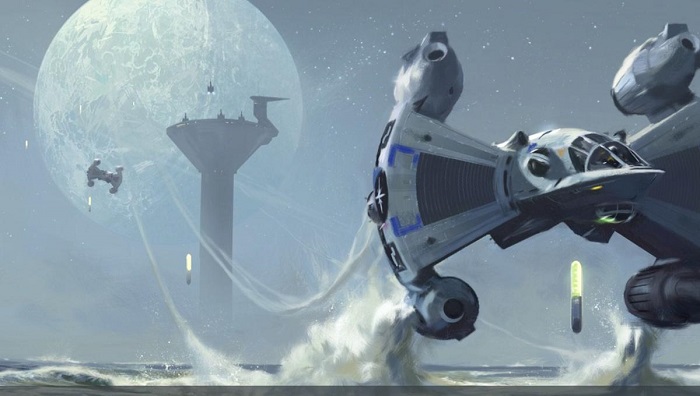
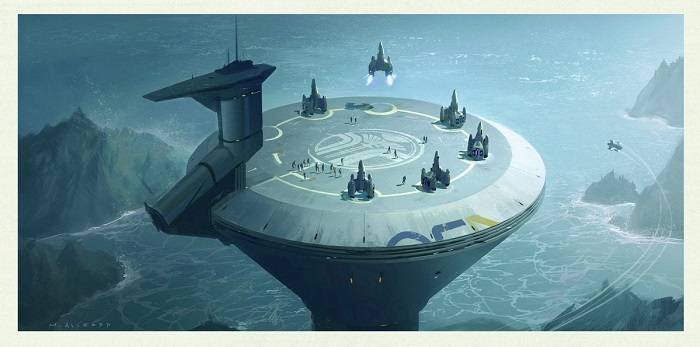
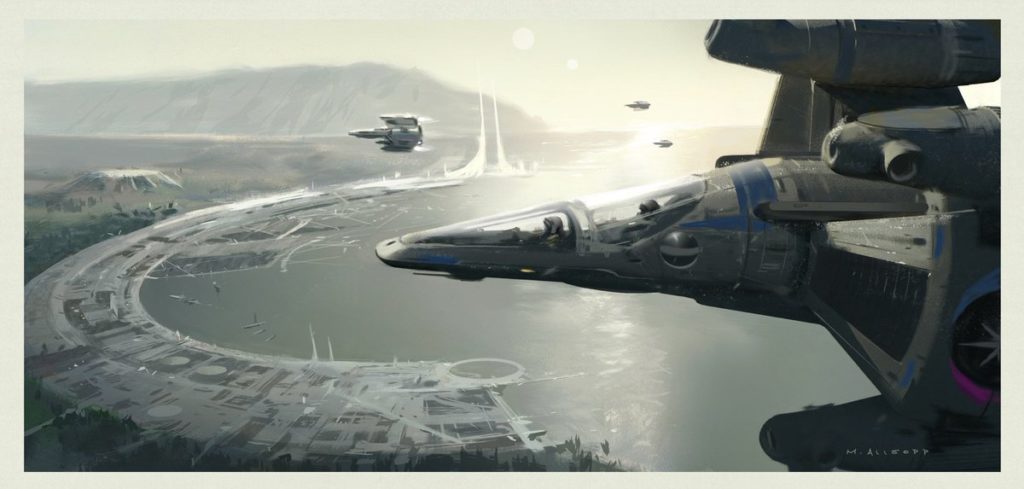

The film’s ending was clearly set up for a sequel. Xur escaping, the Frontier needing rebuilding and Alex deciding to take Maggie back to Rylos to with him to lead the reinstatement of the Starfighter legions. Potentially Alex’s younger brother Louis beginning his own training.
Then things went quiet for the best part of a year. Was it happening? Or will we be disappointed again?
Whitta has cleared up any confusion by confirming a sequel is under development. Also if you click on the twitter link, you’ll get to see heaps more concept art.
Lots of people reacting like they had no idea I’ve been working on a sequel to THE LAST STARFIGHTER. Yup, writing and producing it with original writer/creator @jonbetuel. Check out some of the concept art I posted last year… https://t.co/V57nzwE0jp
— Gary Whitta (@garywhitta) July 15, 2019
In addition to his Star Wars credit, Whitta has a diverse background in print, video games, and further motion pictures. He was the editor of PC Gamer for a time and wrote several computer games including The Walking Dead: The Game, The Walking Dead: 400 Days and The Walking Dead: The Final Season.
More importantly to Film Goblin readers — if not the world at large — he wrote some big-time genre films such as The Book of Eli, the post-apocalyptic Denzel Washington vehicle that received mixed reviews and did business of $157 million against an $80 million budget. Also, After Earth which he co-wrote with Mr. Twist himself M. Night Shyamalan.
I would be really interested to know what that experience was like as Shyamalan, though controversial, has certainly been considered one of the most talented writers of scripts of his generation starting with Stuart Little.
While Whitta may not have actually brought a screenplay to the silver screen since 2013 he was recently hired by Warner Brothers when they stocked a “writer’s room” in order to brainstorm story ideas for the next Sherlock Holmes franchise film starring Robert Downy Jr. and Jude Law. A plum job you bet your ass for an A-franchise as far as I’m concerned.
You can often find Whitta talking inside baseball about the video games industry on the Kinda Funny Games podcast. Here he craps all over the way the Star Wars license has been handled by Electronic Arts.
Whitta’s The Last Starfighter sequel/reboot comes fifteen years after the original film’s director Nick Castle tried to launch a true sequel of his own in 2005.
Last year in an interview with Bloody Disgusting Castle had this to say.
“I think it was 2005 and it was going to be at that point a 30 year, 35 year sequel. It was literally a sequel where Lance [Guest] and Catherine Marie [Stewart], the leads were going to come back as parents. We had a fun script so I’m not sure right now where Jonathan [Betuel] is going to take it. He has a partner named Gary Whitta who wrote
Rogue One so he’s in good company there. Hopefully, they’ll mount something fun and we’ll see our characters again.”
Castle goes onto say that he won’t be directing this one:
“Now just this last year, the writer has retained the rights legally now… I won’t be a part of it as a director.”
The more you read about the Starfighter IP languishing in development hell for so many decades the more you learn this all stems from Jonathan Beuel intransigence.
Although there is complicated interplay between the features of the ownership of the rights between Universal and Warner Brothers back around 2015 there was talk that no less than Steven Spielberg and Seth Rogen had shined the light of their attention on developing a Starfighter project but that Betuel held the keys to the rights stipulating (apparently) that he be involved with the project or else no one could have a go at the property. What isn’t clear is whether it was about the money or about a creative stake in the film.
Said Seth Rogen:
“Spielberg himself told me he couldn’t get the rights after I told him how long I’d tried…[Betuel] has the rights and won’t budge.”
The word “budge” makes it sound like a pecuniary issue. The price wasn’t right for Betuel, in other words. This is pure conjecture on my part.
What isn’t conjecture is that Betuel brushed off Rogen in an interview with Yahoo saying
“I saw that, and it painted me as the Howard Hughes, bah humbug, standing in the way,” Beutel laughed, “That was hilarious. Hilarious and inaccurate.”
But who are you going to believe? One of the biggest box office stars in the world with a mug of root beer for a face or the guy who hasn’t been part of a meaningful project for the last 25 years? Why would Seth Rogen lie? He has nothing to lose whereas Betuel doesn’t have much on the back burner besides Starfighter. I know that sounds mean but there it is.
But Whitta seems to take Betuel’s side here, saying that there is some inherently complicated issue pertaining to the rights aside from whether or not Betuel’s involvement is an a priori part of the deal.
Whitta: “You’ve got this completely byzantine, impenetrable situation where no one seems to know exactly what the deal is.”
Sounds like he’s trying to stay in Betuel’s good graces but if both Spielberg and Rogen can’t get this thing off the ground what makes Whitta think different?
Involving Betuel in the creative process more deeply may be the answer.
When Whitta began tweeting out concept art earlier this summer, already reported
on at Film Goblin, he tagged Rogen. When asked about his intriguing Twitter game Whitta responded coyly, “I know Seth is a fan of the original and he’s tried to get this done before too. We’ve chatted on Twitter about it. Personally I think he’d make a fantastic Centauri.”
Since Whitta tweeted out that new concept art last month there has been little news regarding movement on the project. But we just wanted to give you the total breakdown of where things stood because there is, apparently, massive interest among a core group of fans who want to see this property brought back to the big screen once again.
So there you have it. According to Castle, the rights have been secured by Whitta and The Last Starfighter property is off the leash. It will take some convincing though for Whitta and Betuel to drum up enough money to get the picture off the ground. And they’ll have to find a studio that thinks a niche cult film from the 1980s still has mass appeal.
In my opinion, it’s a tall order based only upon interest from millionaire tech wizards in their 40s who have a weird sentimental attachment to an off-brand Star Wars.
But Whitta seems to have a passion for the project and there are interesting things about the original to draw from. Namely a good score and likable original characters. It would be sad if the original cast weren’t involved at least to a small degree in the remake as was the plan in 2005.
To get a movie made now I’m not sure you’ll be able to strip away the politics of needing to cast a woke assemblage of new starfighters.
To harken back to the 1980s is CLEARLY not de rigeur in the writer’s rooms if the new Star Wars movies are any indication.
Kill the past and all.
Kill off Luke and Han.
But what do you have when you do that? Not a movie. At least not one anyone wants to see. Pickle Abrams and Kathleen Kennedy have served up that corporate choke dick to us, but maybe it was the best that they could do.
We’ll see how things proceed in Starfighter-land but don’t get your hopes up for something that will break the mold. This is an underdog picture only striving to get before the cameras.
We’ll bring you all the latest news as it comes in vis-a-vis The Last Starfighter 2.

